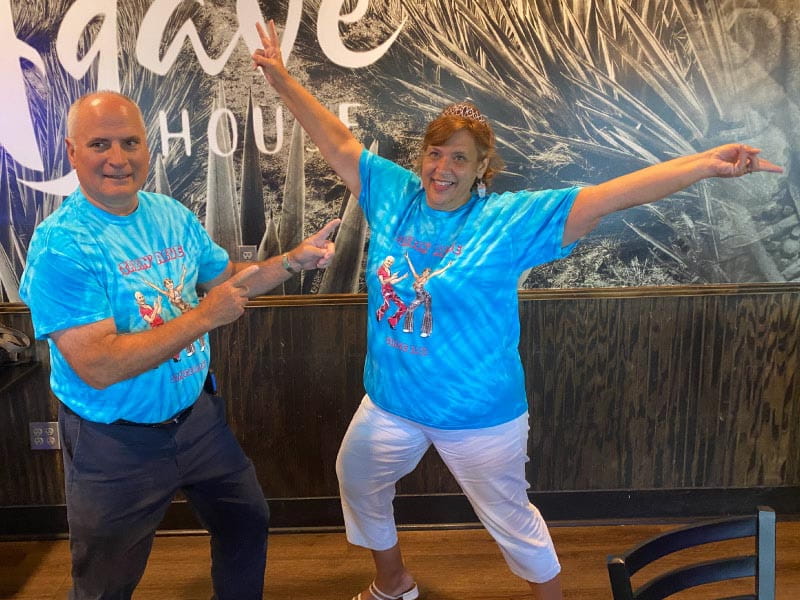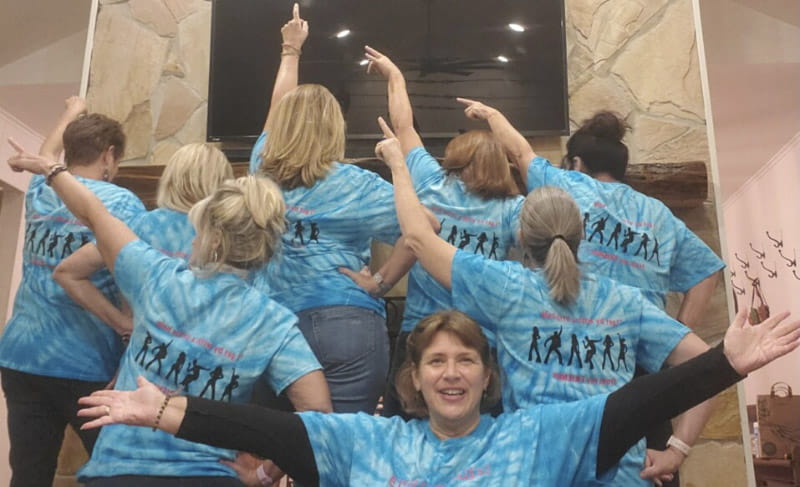Her husband found her unresponsive. He gave CPR, the first step toward her 'Stayin' Alive.'
By Lindsey Giardino, American Heart Association News

On a Saturday morning, Regina Allemand headed into her realty office to prepare for an afternoon showing houses in a New Orleans suburb. She was ahead of schedule, so she went to her favorite nail salon for a pedicure.
It was nearly Easter, so she picked out a different pastel color for each toe. When she got in her car to leave, she wondered whether her family had started their day.
Her husband and sister were taking her mom, who has dementia, to a casino. Regina opened the app on her phone to check the cameras installed at her mom's house. She didn't see anyone there, but she heard a strange beeping sound. Regina put her car in drive and headed to the house to investigate.
The beeping turned out to be coming from her sister's computer. Yet something else worrisome developed. Regina began having intense chest pains. She called her husband, Norbert, to let him know what was happening. Thinking she was joking, he sarcastically responded that he'd meet her at the end of the drive and take her to the ER.
The call disconnected. Norbert thought he might have upset her. When she wasn't answering his calls, he drove to the house.
Walking in, the first thing he saw was Regina's feet. She was on the ground, her eyes open. She wasn't responsive.
Norbert called 911 and immediately began CPR. He knew how because his job at a chemical plant requires him to train every year.
When a sheriff's deputy arrived, he asked Norbert, "Do you want me to take over?"
"I got this," he responded.
Norbert continued giving his wife CPR until the paramedics took over. They loaded her onto a stretcher and headed to a hospital.
On the way, her heart stopped beating again. Paramedics used an automated external defibrillator, or AED, to restore her heart rhythm. She also was put on a breathing machine.
When the ambulance arrived at the hospital, so, too, did Regina's priest. He was there to give her last rites.
Regina stayed on life support for two days. Once conscious, she consented to having a pacemaker and defibrillator implanted in her chest. She was home within a week. However, she wasn't the same.
Sore ribs prevented her from enjoying hugs from well-wishers. Medication left her feeling emotionless. That continued for two months, until her son's wedding. She went in wondering whether this magical moment might spark her emotions.
"I was walking down the aisle with him, and I felt a tear come down my eye," she said. "I put my finger up to it, and I felt a little alive. The world had been happening around me, but I wasn't there."
On the first anniversary of her near-death experience, Regina hosted a "Stayin' Alive" party. The theme carried many messages.
Beyond her obvious joy of being alive, the song by the Bee Gees is used in CPR training because it has a tempo that people should follow when giving chest compressions (and the title makes it easier to remember in that tense situation).

She blasted the song during the party and handed out flyers with more information about CPR. She's devoted to spreading the word because only about 10% of people who go into cardiac arrest outside a hospital survive the event; if performed immediately, CPR can double or triple the chance of survival.
"Just knowing the skill of CPR could save a child, a colleague or a family member," Regina said.
Stories From the Heart chronicles the inspiring journeys of heart disease and stroke survivors, caregivers and advocates.





